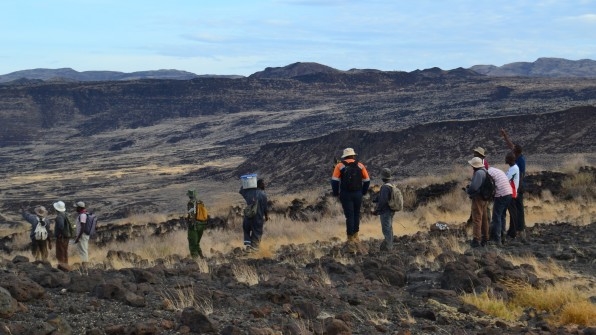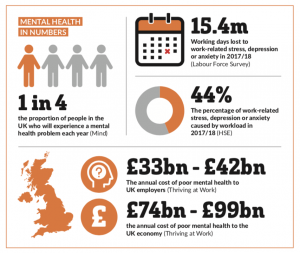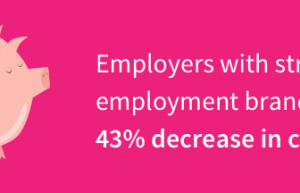In a remote, barren part of northern Kenya, a new pilot project will soon begin injecting CO2 more than 1,300 feet underground into volcanic rocks, where the greenhouse gas will also turn to stone. It’s a process that’s already been proven to work in Iceland, where a carbon removal plant pulls CO2 from the atmosphere and then pumps it underground. Now Kenya, which has similar geology, wants to build up a carbon removal industry of its own.
The process speeds up something that happens naturally: When carbon dioxide in water hits certain types of rocks, like the volcanic rock basalt, it causes a chemical reaction that binds the CO2 to calcium and magnesium. “You’re actually growing new minerals underground that turn the CO2 into a solid rock,” says Claire Nelson, cofounder and chief science officer of Cella Mineral Storage, a startup that’s partnering with a geothermal power company on the new project in Kenya. Nelson, a geochemist, is also a postdoctoral research scientist at Columbia University.
The company is one of the latest to get funding from Frontier, an initiative spending nearly $1 billion on carbon removal projects, ranging from burying wood to spreading crushed rock over farm fields. The initiative, backed by companies like Stripe and Alphabet, supports early-stage companies pioneering new ways to permanently capture CO2. As the world tries to slash emissions, climate scientists say that this type of carbon removal needs to happen simultaneously—and natural methods, like planting trees, can’t fully solve the problem.

Kenya’s volcanic landscape, filled with basalt, is a perfect fit for the process of turning CO2 to stone. The country also runs on more than 92% renewable energy, which can cleanly power the energy-intensive process of sucking CO2 from the air. (Cella will partner with another company that will build a “direct air capture” plant; the pilot will initially buy CO2 just to prove that the sequestration process works.)
“When you’re thinking about large-scale carbon removal, it makes the most sense in a place where there’s a ton of renewables,” Nelson says. Roughly half of Kenya’s electricity now comes from geothermal energy, and planned geothermal plants will double that by 2027. Along with hydropower, wind, and solar power, the country expects to run on 100% clean energy by the end of the decade. Because energy demand in the country is inconsistent, the grid currently produces a surplus of clean power; the extra power could potentially run 20 large carbon removal facilities without any impact on the country’s other energy needs. Having the steady demand from new plants could also help lower energy prices for consumers, who are now stuck paying high prices for extra power that industry isn’t using.
James Mwangi, the cofounder of Climate Action Platform-Africa, is one of the people behind a push to make Kenya’s volcano-filled Rift Valley into what he calls the “Great Carbon Valley.” (Cella’s Kenya-based CEO, Corey Pattison, launched the company with Nelson after brainstorming possibilities for a new carbon removal ecosystem with Mwangi.) Cella’s project will be the first in the area.

“We’re used to thinking about the continent in terms of its forests, its peatlands, its grasslands, its wetlands that need to be preserved,” Mwangi said in a TED talk earlier this year. “And we should definitely continue to invest in the Indigenous communities, the smallholder farmers, and the local innovators who are protecting and expanding natural carbon sinks. But that should not blind us to the fact that Africa also provides an ideal potential home for scaling the latest and most ambitious of climate technologies.” The continent already has the lowest per-capita footprint; it could be the first to become carbon negative, he says.
At the site in northern Kenya, a new 140-megawatt geothermal power plant will come online in the second quarter of 2023. Cella plans to begin its pilot at the same time, testing new techniques like reusing salty water from the geothermal plant’s own processes. If all goes well, it will work with a direct air capture company to launch a full commercial project at the site late next year.
Kenya wants the industry to quickly grow: Kenya’s president, William Ruto, said in a recent speech that the country’s next significant export will be carbon credits.
(14)
Report Post








